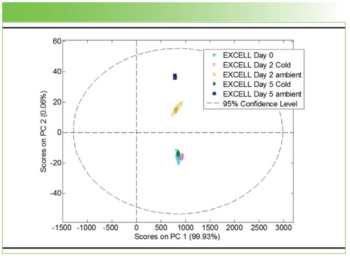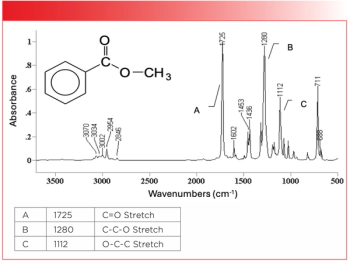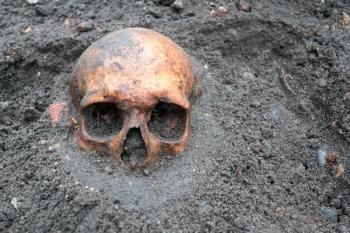
Best of the Week: Catalyst Surfaces, Biomedical Applications of Raman Spectroscopy
Top articles published this week include an interview with Shreya Singh, a tutorial about using Raman spectroscopy to probe water content and structures in biological tissues, and an article about detecting honey adulteration using near-infrared (NIR) spectroscopy.
This week, Spectroscopy published a variety of articles highlighting recent studies in several application areas, including catalyst development, biomedical research, and environmental analysis. Key techniques highlighted in these articles include diffuse reflectance infrared Fourier transform spectroscopy (DRIFTS), coherent anti-Stokes Raman scattering (CARS), and near-infrared (NIR) spectroscopy. Happy reading!
Recently, Spectroscopy sat down with Shreya Singh of Cornell University to discuss her recent article that investigated using diffuse reflectance infrared Fourier transform spectroscopy (DRIFTS) and how it allows better real-time monitoring for the photocatalytic conversion of CO2. Photocatalytic CO₂ conversion is promising for sustainability but is limited by low catalyst efficiency and poor product selectivity, making large-scale application difficult (1). DRIFTS enables real-time monitoring of reaction intermediates on catalyst surfaces, providing crucial insights into reaction mechanisms and guiding catalyst improvement (1). DRIFTS analysis revealed that modifying TiO₂ with metals like gold, silver, and copper changes product outcomes. Gold and silver favor CO formation, while copper promotes methanol, a more valuable product, helping target more efficient catalyst development (1).
This tutorial article from Yuikhiro Ozaki and Hidetoshi Sato explores how Raman spectroscopy, particularly analysis of OH stretching bands in the 3800–3100 cm⁻¹ region, can noninvasively probe water content and structure in biological tissues. Case studies include eye lens aging, cataract development in mice, corneal hydration, and changes in brain water clusters under anesthesia, drug exposure, and death (2). It also highlights in vivo skin hydration measurements and imaging with coherent anti-Stokes Raman scattering (CARS) (2). These investigations show that water’s bonding state (strongly or weakly hydrogen-bonded) correlates with physiological and pathological conditions. The authors emphasize Raman spectroscopy’s potential to advance our understanding of water’s role in disease progression and tissue function (2).
Researchers from Malaviya National Institute of Technology in Jaipur, India, have developed a rapid, non-destructive method to detect honey adulteration using near-infrared (NIR) spectroscopy and aquaphotomics. By analyzing water’s absorbance patterns, the team identified unique spectral fingerprints of adulteration (3). Over 160 samples were tested using chemometric models such as PCA, PLS-DA, and PLSR, achieving 100% classification accuracy and excellent predictive performance (3). This approach, which requires no sample preparation, shows strong potential for real-time food authentication and could be expanded to other products where water structure reflects chemical composition.
David Birch, PhD, Emeritus Professor at the University of Strathclyde and co-founder of Horiba Jobin Yvon IBH Ltd., has been elected an Honorary Fellow of the Institute of Physics (IOP), the organization’s highest honor. Birch helped establish IBH as a leader in time-resolved fluorescence instrumentation, with key innovations like the DeltaFlex system and FLIMera camera being widely used in life sciences, drug discovery, and materials science (4). With over 300 published research papers and a legacy of translating academic research into commercial success, Birch's contributions continue to shape Horiba’s advancements in fluorescence technologies and multidisciplinary research worldwide (4).
A recent study by researchers at the Université de Sherbrooke examined Arctic gossans on Axel Heiberg Island, Nunavut, as analogs for Martian terrain. Using rover-compatible spectroscopic techniques such as Raman, X-ray fluorescence (XRF), visible-near infrared (VNIR), and X-ray diffraction (XRD), the team analyzed seven gossans and identified key minerals like gypsum, quartz, silicates, and iron compounds (5). Notably, they also detected organic carbon in organo-mineral complexes up to 50 cm deep (5). Stratified layers and freeze-thaw-driven color variations mimicked potential Martian hydrothermal features. These findings support the utility of gossans in astrobiology and help refine strategies for detecting biosignatures on Mars in future planetary exploration missions (5).
References
- Chasse, J. Enhancing CO₂ Conversion with DRIFTS-Guided Catalyst Design. Spectroscopy. Available at:
https://www.spectroscopyonline.com/view/enhancing-co-conversion-with-drifts-guided-catalyst-design (accessed 2025-07-31). - Sato, H.; Ozaki, Y. Tutorial Review: The Use of the OH Stretching Bands of Water in Biomedical Applications of Raman Spectroscopy. Spectroscopy. Available at:
https://www.spectroscopyonline.com/view/tutorial-review-the-use-of-the-oh-stretching-bands-of-water-in-biomedical-applications-of-raman-spectroscopy (accessed 2025-07-31). - Workman, Jr., J. Scientists Use Water and Light to Uncover Honey Adulteration. Spectroscopy. Available at:
https://www.spectroscopyonline.com/view/scientists-use-water-and-light-to-uncover-honey-adulteration (accessed 2025-07-31). - Wetzel, W. Horiba’s David Birch Honored as Institute of Physics Fellow for Pioneering Work in Fluorescence Lifetime Measurement. Spectroscopy. Available at:
https://www.spectroscopyonline.com/view/horiba-s-david-birch-honored-as-institute-of-physics-fellow-for-pioneering-work-in-fluorescence-lifetime-measurement (accessed 2025-07-31). - Wetzel, W. Martian Clues in the Canadian Arctic: Arctic Gossans Offer New Window into Past Life on Mars. Spectroscopy. Available at:
https://www.spectroscopyonline.com/view/martian-clues-in-the-canadian-arctic-arctic-gossans-offer-new-window-into-past-life-on-mars (accessed 2025-07-31).
Newsletter
Get essential updates on the latest spectroscopy technologies, regulatory standards, and best practices—subscribe today to Spectroscopy.





